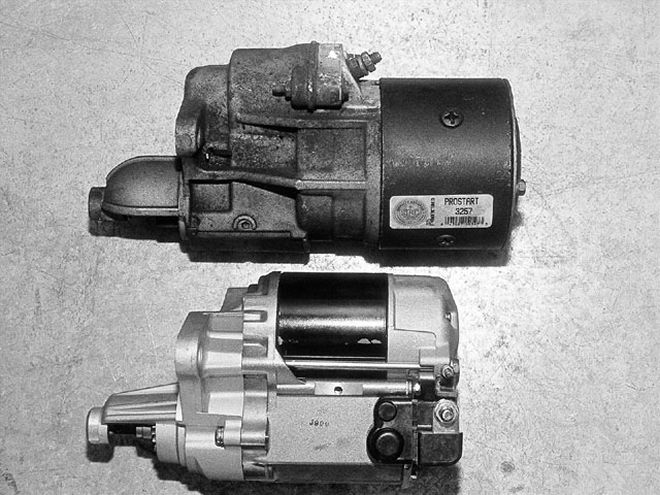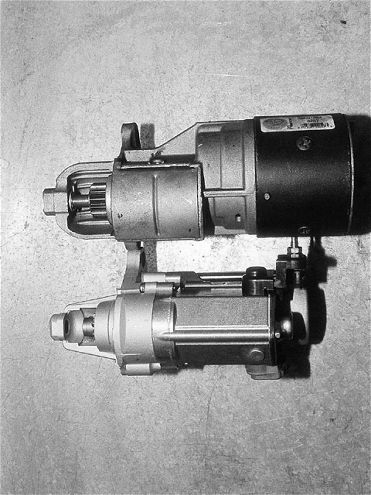

If there's one thing that sets Chrysler products apart from the crowd, even to the average person who's not an automotive enthusiast, it would have to be the distinctive sound of the Chrysler gear-reduction starter. Even before any of us could discern the difference between a 440s exhaust note and those of Ford's and Chevrolet's big blocks, we could tell when the Chrysler fired up.
The gear reduction technology used by Chrysler since the early '60s has finally caught on at Ford and GM, for a number of reasons. However, back in the Chrysler camp, the evolution of the starter has kept pace with the demands of being competitive in the modern market. For instance, due to more stringent fuel economy requirements, every component on a new vehicle has been scrutinized for performance improvements and weight savings. "Doing more with less" was the mantra and it's worked nicely, including when applied to the starter.

Anyone who's ever changed the stock starter on their Mopar knows how bulky it is. Add headers into the equation, and swapping the starter can become an all-day affair. Aside from the sheer bulk and space limitations, retaining the stocker also retains several extra pounds in the front of your car. Tipping the scales at over 15 1/2 pounds, the stock Chrysler starter isn't what you'd call svelt. This is why high-torque mini starters have been employed by drag racers over the years. But what most people don't know is that these same starters employed by the weekend warriors and bracket racers are standard equipment on new vehicles. Go down to the local Dodge store and order a starter for your new truck, and what they will give you is an aluminum-bodied, compact Nippondenso starter. Order a "lightweight mini-starter" and you get the same Nippondenso starter that tips the scales at just under 10 1/2 pounds. Now remember that the rule of thumb for the dragstrip is that every 100 pounds shaved from the car is good for a 1/10-second gain, so you're already 1/20 of the way there. An aluminum water pump, radiator, headers, and intake will get you there. Plus, any time you can take weight off the nose of the vehicle, your 60-foot times are going to improve as well. Sure it's only five pounds, but it's a start and won't cost you much more.
Then we get to the maintenance factor. Putting a mini starter in its hole, flat on your back with the car on jackstands isn't a difficult task, even with headers. Try doing it with the stocker. That's the situation we were in with Mike Volpe's 340 Demon after installing a set of Tube Technology's headers. The headers were designed to clear the stock starter, but they had to be unbolted from the heads to change the starter; the late-model mini starter slipped right in with the headers bolted up. We ordered a late-model starter from PA-Performance.com and threw it in. The late-model starter is more than up to the task of cranking over our musclecar engines, plus it has the advantages of having provisions for a factory heat shield. After doing the installation, we thought it'd be interesting to show a comparison between a stock starter, a late model production high-torque mini starter, and a full-race PowerMaster starter we borrowed from PGS Performance.
StockWeightLength from front to mounting surfaceWidth of body15 pounds, 9 ounces8.5 inches4.5 inchesLate Model10 pounds, 7 ounces6 7/8 inches3 5/8 inches*Race8 pounds, 5 ounces6 1/8 inches3.5 inches*** 5 1/4-inches wide when measuring cable terminals
** 4 inches wide when measuring the cable terminals